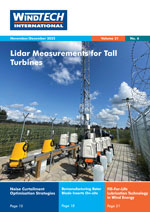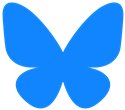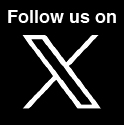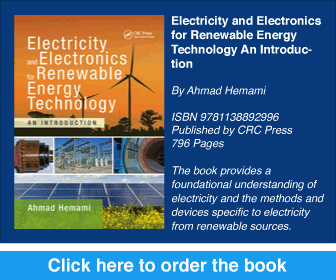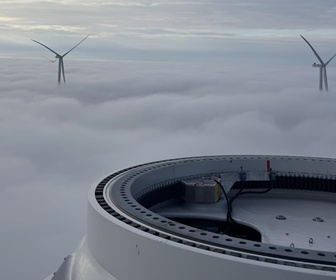- Category: Articles
Problems of a Reliable Connection between Steel Tower and Concrete Foundation
 The construction of wind energy converters is normally based on an expected lifetime of 20 years. This assumption is made when designing the mechanical parts of the engine and the reinforced concrete foundation. However, in some cases defects occur much earlier and raise questions of serviceability, stability and durability. This article deals with the problems of how to connect a steel tower to a reinforced concrete foundation. It shows the possible damage that might occur and an example of reconstruction.
The construction of wind energy converters is normally based on an expected lifetime of 20 years. This assumption is made when designing the mechanical parts of the engine and the reinforced concrete foundation. However, in some cases defects occur much earlier and raise questions of serviceability, stability and durability. This article deals with the problems of how to connect a steel tower to a reinforced concrete foundation. It shows the possible damage that might occur and an example of reconstruction.
By Marc Gutermann, managing partner, Prof. Dr.-Ing. Steffens Ing., Germany
.
 The construction of wind energy converters is normally based on an expected lifetime of 20 years. This assumption is made when designing the mechanical parts of the engine and the reinforced concrete foundation. However, in some cases defects occur much earlier and raise questions of serviceability, stability and durability. This article deals with the problems of how to connect a steel tower to a reinforced concrete foundation. It shows the possible damage that might occur and an example of reconstruction.
The construction of wind energy converters is normally based on an expected lifetime of 20 years. This assumption is made when designing the mechanical parts of the engine and the reinforced concrete foundation. However, in some cases defects occur much earlier and raise questions of serviceability, stability and durability. This article deals with the problems of how to connect a steel tower to a reinforced concrete foundation. It shows the possible damage that might occur and an example of reconstruction.By Marc Gutermann, managing partner, Prof. Dr.-Ing. Steffens Ing., Germany
- Category: Articles
Gamesa Consolidates its own Preventive Maintenance
 Among its many other activities, Gamesa is involved with predictive maintenance services and condition monitoring systems. In this article Gamesa's services and systems are described in the wider context of the needs for integrated condition monitoring, prediction and preventive maintenance for wind turbines.
Among its many other activities, Gamesa is involved with predictive maintenance services and condition monitoring systems. In this article Gamesa's services and systems are described in the wider context of the needs for integrated condition monitoring, prediction and preventive maintenance for wind turbines.By Gamesa Eólica, Spain
- Category: Articles
A Non-Battery, Air-to-Air Hybrid System
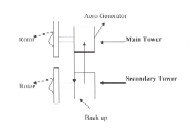 In this article, R.S. Chauhan discusses his ideas for a long-duration (up to 90 days) non-battery air-to-air hybrid back-up system which converts and stores wind energy into an acceptable form during windy periods. This stored energy can then be released to rotate small wind (aero) generators when there is no wind or the wind speed is below the critical velocity. Such a system could ensure the availability of power from wind generators at all times.
In this article, R.S. Chauhan discusses his ideas for a long-duration (up to 90 days) non-battery air-to-air hybrid back-up system which converts and stores wind energy into an acceptable form during windy periods. This stored energy can then be released to rotate small wind (aero) generators when there is no wind or the wind speed is below the critical velocity. Such a system could ensure the availability of power from wind generators at all times.By R.S. Chauhan, India
.- Category: Articles
Wind Power Anywhere
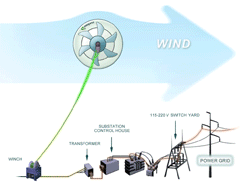 The Magenn Air Rotor System ‘MARS’ is a Wind Power Anywhere solution with certain advantages over existing conventional wind turbines and diesel generating systems. These advantages include global deployment, low costs, good operational performance and environmental benefits. The article describes the features of the system, and its history and development, quoting extensively from the words of its creator, Fred Ferguson, before listing the advantages and market that Magenn foresee for this system.
The Magenn Air Rotor System ‘MARS’ is a Wind Power Anywhere solution with certain advantages over existing conventional wind turbines and diesel generating systems. These advantages include global deployment, low costs, good operational performance and environmental benefits. The article describes the features of the system, and its history and development, quoting extensively from the words of its creator, Fred Ferguson, before listing the advantages and market that Magenn foresee for this system.By Mac Brown, CEO Magenn Power, Canada
- Category: Articles
A Case Study
 Based on a real case study, this article addresses the issues that can be encountered during project planning when a wind resource assessment programme (WRAP) is not adequately designed. The study highlights the uncertainty induced by vertical and horizontal extrapolation of the wind resource. The impact of these parameters on energy production is demonstrated based on simulations using commercial wind resource models. The resulting conclusions highlight the importance of well-designed WRAPs. The experience, results, benefits and challenges of sodar (sound detection and ranging) use are briefly reviewed in the context of the complex terrain and operating conditions of Canada. Limitations encountered by numerical models (steady state wind flow model, CFD model) are also examined in a comparative case study.
Based on a real case study, this article addresses the issues that can be encountered during project planning when a wind resource assessment programme (WRAP) is not adequately designed. The study highlights the uncertainty induced by vertical and horizontal extrapolation of the wind resource. The impact of these parameters on energy production is demonstrated based on simulations using commercial wind resource models. The resulting conclusions highlight the importance of well-designed WRAPs. The experience, results, benefits and challenges of sodar (sound detection and ranging) use are briefly reviewed in the context of the complex terrain and operating conditions of Canada. Limitations encountered by numerical models (steady state wind flow model, CFD model) are also examined in a comparative case study.By Bouaziz Ait-Driss, Francis Pelletier, Milena Dimitrijevic and Christophe Sibuet-Watters, Helimax Energy, Canada
- Category: Articles
A New Option for Wind Integration?
This article presents a recent analysis of wind energy integration into the electricity systems of Germany and Austria. It raises the question of whether flexible demand can provide cheap balancing options to fulfil the growing need for balancing capacity. The main focus is on the interaction of wind power production and flexible demand to im-prove the total system efficiency. Detailed simulations of wind power production and power plant operation are used to quantify additional reserve power, which, next to grid extension, is the main issue concerning the integration of wind energy. An assessment of demand response potentials provided evidence that the costs of additional reserve power could be reduced and that demand response can be a valuable option for inte-grating wind power into electricity systems.
By Marian Klobasa, Fraunhofer Institute for Systems and Innovation Research, Germany
- Category: Articles
Reconciling a conflict between wind turbines and radio systems
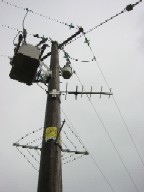 Renewable energy is at the heart of government policy in most western countries as global warming and its causes rise to the top of political and public agendas.? At the same time, the public demand for further growth in communications and more mobility seems as insatiable as increased demand for energy.? But within these public aspirations lies a dilemma: wind turbines, the major source of growth in renewable energy, cause interference to radio communications upon which many telecommunication services depend.? Can these conflicts be resolved?? Radio engineers, recognising the importance of both renewable energy and radio communications are seeking ways to reconcile this conflict.
Renewable energy is at the heart of government policy in most western countries as global warming and its causes rise to the top of political and public agendas.? At the same time, the public demand for further growth in communications and more mobility seems as insatiable as increased demand for energy.? But within these public aspirations lies a dilemma: wind turbines, the major source of growth in renewable energy, cause interference to radio communications upon which many telecommunication services depend.? Can these conflicts be resolved?? Radio engineers, recognising the importance of both renewable energy and radio communications are seeking ways to reconcile this conflict.By Adrian Grilli, the Joint Radio Company Ltd, UK
.


